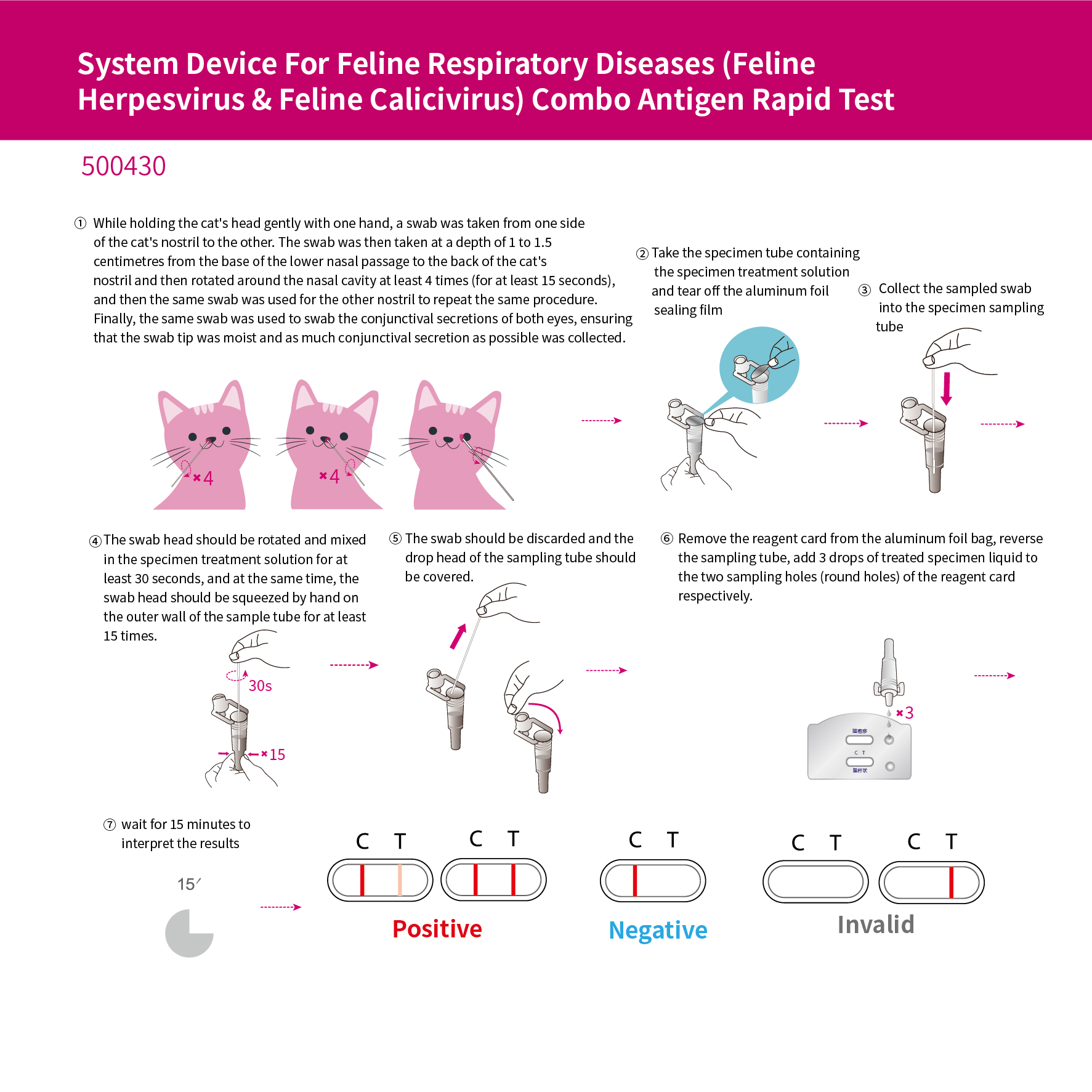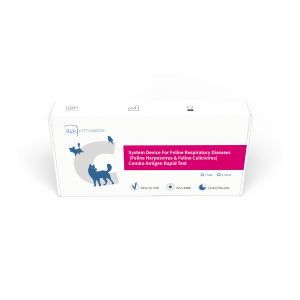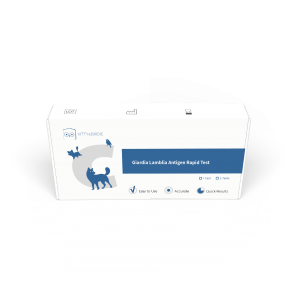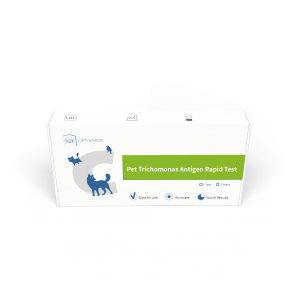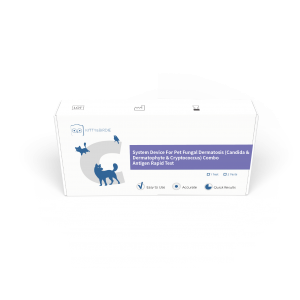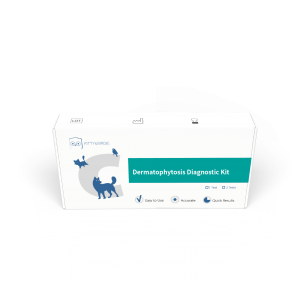System Device For Feline Respiratory Diseases (Feline Herpesvirus & Feline Calicivirus) Combo Antigen Rapid Test
This product is used for rapid screening of pet cat ocular and nasal secretion samples for the presence of feline herpesvirus and feline cuprovirus antigens, and can be used as an aid in the diagnosis of feline herpesvirus and feline cuprovirus infections.
Upper respiratory tract infections in cats are common in cats, and feline herpesvirus and feline cupripovirus are the two main causes of feline upper respiratory tract infections (URIs). Dual infections with these viruses are not uncommon.
Feline herpesvirus type 1 belongs to the family Herpesviridae, subfamily of herpesviruses in the genus Varicella. It can cause viral rhinotracheitis in young cats. Early clinical signs include depression, sneezing and coughing, followed by photophobia, conjunctivitis, a rapid rise in body temperature, paroxysmal sneezing, deep tracheal coughing, and ulcers on the tongue and upper jaws are often seen; if there is a bacterial secondary infection, the ocular and nasal secretions take on a pus-like appearance. In chronic infections, chronic sinusitis, ulcerative keratitis, and total ophthalmia may develop. Infection in young kittens may result in severe conjunctivitis, and ulcerative keratitis may eventually lead to total ophthalmitis and blindness. Acute infection, with symptoms lasting 10 to 14 days, has a low mortality rate in adult cats, whereas it can be as high as 20 to 30 per cent in kittens. When the infection is confined to the upper respiratory tract, it is often referred to as viral rhinotracheitis ( FVR ). When the virus is more virulent, pneumonia can occur, with respiratory distress and dry or wet rales in the lungs, and kittens under three months of age can die of pneumonia.
Feline cupulovirus disease is a viral respiratory infection of cats that manifests itself primarily by upper respiratory symptoms, namely depression, plasma and mucous rhinorrhea, conjunctivitis, stomatitis, tracheitis, and bronchitis, accompanied by biphasic fever。Feline cuprovirus infection is a common disease in cats, with high morbidity and low mortality. The incubation period after infection is 2~3 days, with an initial fever of 39.5~40.5 degrees Celsius. The severity of symptoms varies according to the virulence of the infected virus. Oral ulcers are the most prominent feature, oral ulcers are obvious around the tongue and hard palate, palatal cleft, large ulcers and granulation hyperplasia appear, and sick cats have difficulty eating. Sick cats have poor spirit, sneezing, increased oral and nasal secretions, salivation, ocular and nasal secretions start as plasma and become purulent after 4-5 days, corneal inflammation, shyness and blindness. Cupripovirus infection without secondary other viral and bacterial infections, most of which can be tolerated and recovered after 7~10 days, often becoming virulent cats.
It is clinically difficult to differentiate between feline herpesvirus and feline cupripovirus infections. Both viruses can be isolated by virus isolation from oropharyngeal or conjunctival swabs using feline cell lines. Alternatively, immunofluorescence is used to detect specific viral antigens, and virus neutralisation assays to detect antibody potency in serum samples. A variety of PCR methods can also be used to detect viruses. The current use of latex immunochromatography to detect pathogens allows rapid screening for suspected feline herpesvirus and feline cupripoxvirus infections, which facilitates early diagnosis and treatment of cat diseases.
